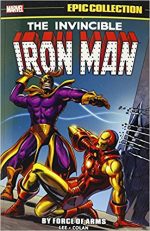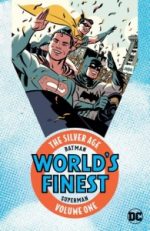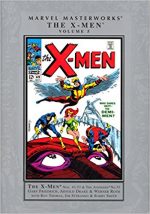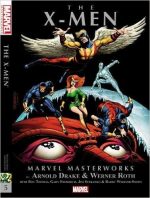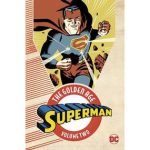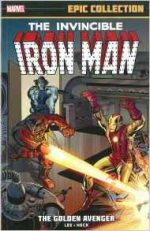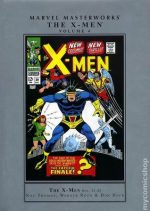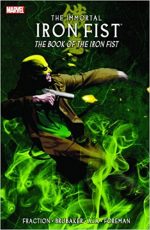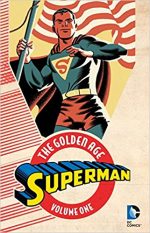
By Jerry Siegel & Joe Shuster & various (DC Comics)
ISBN: 978-1-4012-9109-2
Nearly 79 years ago Superman started the whole modern era of fantasy heroes: outlandish, flamboyant indomitable, infallible, unconquerable.
He also saved a foundering industry and created an entirely new genre of storytelling – the Super Hero.
Since June 1938 he has grown into a mighty presence in all aspects of art, culture and commerce even as his natal comicbook universe organically grew and expanded.
Within three years of his Summer debut, the intoxicating mix of eye-popping action and social wish-fulfilment which hallmarked the early exploits of the Man of Tomorrow had grown to encompass crime-busting, reforming dramas, science fiction, fantasy and even whimsical comedy, but once the war in Europe and the East snared America’s consciousness, combat themes and patriotic imagery dominated most comicbook covers if not interiors.
In comicbook terms at least Superman was quickly master of the world, and utterly changed the shape of the fledgling industry. There was the popular newspaper strip, a thrice-weekly radio serial, games, toys, foreign and overseas syndication and the Fleischer studio’s astounding animated cartoons.
Moreover, the quality of the source material was increasing with every four-colour release and the energy and enthusiasm of originators Jerry Siegel & Joe Shuster went on to inform and infect the burgeoning studio which grew around them to cope with the relentless demand.
This new compilation of the original stories – re-presented in chronological publishing order – covers June 1938 to December 1939 and features the groundbreaking yarns from Action Comics #1-19, Superman #1-3 and his pivotal appearance from New York’s World Fair No. 1 and although most of the early tales were untitled, here, for everyone’s convenience, they have been given descriptive appellations by the editors.
Thus, after describing the foundling’s escape from exploding Planet Krypton and offering a scientific rationale for his incredible abilities explaining his astonishing powers in nine panels, with absolutely no preamble the wonderment begins with Action #1’s primal thriller ‘Superman: Champion of the Oppressed!’ as the costumed crusader – masquerading by day as mild-mannered reporter Clark Kent – began averting numerous tragedies.
As well as saving an innocent woman from the Electric Chair and roughing up a wife beater, the tireless crusader worked over racketeer Butch Matson – consequently saving feisty colleague Lois Lane from abduction and worse – and outed a lobbyist for the armaments industry who was bribing Senators on behalf of greedy munitions interests fomenting war in Europe…
The next breathtaking instalment in Action #2 (July 1938) saw the mercurial mystery-man travelling to the war-zone to spectacularly dampen down the hostilities already in progress in ‘Revolution in San Monte Part 2’ before ‘The Blakely Mine Disaster’ found the Man of Steel responding to a coal-mine cave-in to expose corrupt corporate practises and afterwards cleaning up gamblers who ruthlessly fixed games and players in #4’s ‘Superman Plays Football’.
The Action Ace’s untapped physical potential was highlighted in the next issue as ‘Superman and the Dam’ pitted the human dynamo against the power of a devastating natural disaster, after which in #6 canny chiseller Nick Williams attempted to monetise the hero – without asking first. ‘Superman’s Phony Manager’ even attempted to replace the real thing with a cheap knock-off but quickly learned a very painful and memorable lesson in ethics…
Although Superman starred on the first cover, the staid and cautious editors were initially dubious about the alien strongman’s popular appeal and fell back upon more traditional genre scenes for the following issues (all by Leo E. O’Mealia and all included here).
Superman – and Joe Shuster’s – second cover appeared on Action Comics #7 (December 1938) and prompted a big jump in sales even as a riotous romp inside revealed why ‘Superman Joins the Circus’ with the caped crusader crushing racketeers taking over the Big Top.
Fred Guardineer then produced genre covers for #8 and 9 whilst the interiors saw ‘Superman in the Slums’ working to save young delinquents from a future life of crime and depravity and latterly featured the city cops’ disastrous decision to stop the costumed vigilante’s unsanctioned interference in ‘Wanted: Superman’.
That manhunt ended in an uncomfortable stalemate…
Action Comics #7 had been one of the highest-selling issues ever, so #10 again sported a stunning Shuster shot whilst Siegel’s smart story of ‘Superman Goes to Prison’ struck another telling blow against institutionalised injustice with the Man of Tomorrow infiltrating a prison to expose the brutal horrors of the State Chain Gangs.
Action #11 featured a maritime cover by Guardineer whilst inside heartless conmen were driving investors to penury and suicide before the Metropolis Marvel interceded in ‘Superman and the “Black Gold†Swindle’.
Guardineer’s cover of magician hero Zatara for issue #12 incorporated another landmark as the Man of Steel was given a cameo badge declaring he was inside each and every issue. Between those covers, ‘Superman Declares War on Reckless Drivers’ provided a hard-hitting tale of casual joy-riders, cost-cutting automobile manufacturers, corrupt lawmakers and dodgy car salesmen who all felt the wrath of the hero after a friend of Clark Kent was killed in a hit-&-run incident.
By now the editors had realised that the debut of Superman had propelled National Comics to the forefront of the fledgling industry, and in 1939 the company was licensed to produce a commemorative comicbook celebrating the opening of the New York World’s Fair, with the Man of Tomorrow topping the bill on the appropriately titled New York World’s Fair Comics among such early DC four-colour stars as Zatara, Butch the Pup, Gingersnap and gas-masked mystery avenger The Sandman.
Following an inspirational cover by Sheldon Mayer, Siegel & Shuster’s ‘Superman at the World’s Fair’ described how Lois and Clark are dispatched to cover the gala event, giving the hero an opportunity to contribute his own exhibit and bag a bunch of brutal bandits to boot…
Back in Action Comics #13 (June 1939 and another Shuster cover) the road-rage theme of the previous issue continued as ‘Superman vs. the Cab Protective League’ pitted the tireless foe of felons against a murderous gang trying to take over the city’s taxi companies. The tale also introduced – in almost invisibly low key – The Man of Steel’s first great nemesis – The Ultra-Humanite…
Next follows a truncated version of Superman #1. This was because the industry’s first solo-starring comicbook reprinted the earliest tales from Action, supplemented with new and recovered material – and that alone is featured here.
Behind the iconic Shuster cover the first episode was at last printed in full, describing the alien foundling’s escape from exploding Planet Krypton, his childhood with unnamed Earthling foster parents and journey to the big city as ‘Origin of Superman’.
Also included in those six pages (cut from Action #1, restored for solo vehicle and designated ‘Prelude to “Superman, Champion of the Oppressed‒) was the Man of Steel’s routing of a lynch mob and capture of the real killer which preceded his spectacular saving of the accused murderess that started the legend…
Rounding off the unseen treasures is the solo page ‘A Scientific Explanation of Superman’s Amazing Strength!’, a 2-page prose adventure of the Caped Crime-crusher, a biographical feature on Siegel & Shuster and a glorious Shuster pin-up from the premier issue’s back cover.
Sporting a Guardineer Zatara cover, Action#14 saw the return of the manic money-mad scientist in ‘Superman Meets the Ultra-Humanite’ wherein the mercenary malcontent switches his incredible intellect from incessant graft, corruption and murder to an obsessive campaign to destroy the Man of Tomorrow.
Whilst Shuster concentrated on the interior epic ‘Superman on the High Seas’ – wherein the heroic hurricane tackled sub-sea pirates and dry land gangsters – Guardineer illustrated an aquatic Superman cover for #15, as well as the Foreign Legion cover on #16 wherein ‘Superman and the Numbers Racket’ has the hero save an embezzler from suicide and subsequently wreck another wicked gambling cabal.
Superman’s rise was meteoric and inexorable. He was the indisputable star of Action, plus his own dedicated title; a daily newspaper strip had begun on 16th January 1939, with a separate Sunday strip following from November 5th of that year, which was swiftly garnering millions of new fans.
A thrice-weekly radio serial was in the offing and would launch on February 12th 1940. With games, toys, and a growing international media presence, Superman was swiftly becoming everybody’s favourite hero…
The second issue of the Man of Tomorrow’s own title opened with ‘The Comeback of Larry Trent’ – a stirring human drama wherein the Action Ace cleared the name of the broken heavyweight boxer, coincidentally cleaning the scum out of the fight game, and is followed by ‘Superman’s Tips for Super-Health’ before ‘Superman Champions Universal Peace!’ depicts the hero once more going up against unscrupulous munitions manufacturers by crushing a gang who had stolen the world’s deadliest poison gas weapon.
‘Superman and the Skyscrapers’ finds newshound Kent investigating suspicious deaths in the construction industry, leading his alter ego into confrontation with mindless thugs and their fat-cat corporate boss, after which a contemporary ad and a Superman text tale bring the issue to a close.
Action Comics #17 featured ‘The Return of the Ultra-Humanite’ in a viciously homicidal caper involving extortion and the wanton sinking of US ships and featured a classic Shuster Super-cover as the Man of Steel was awarded all the odd-numbered issues for his attention-grabbing playground.
That didn’t last long: after Guardineer’s last adventure cover – an aerial dog fight – on #18 and which led into ‘Superman’s Super-Campaign’ with both Kent and the Caped Kryptonian determinedly crushing a merciless blackmailer, Superman just monopolised all the covers from #19 onwards. That issue disclosed the peril of ‘Superman and the Purple Plague’ as the city reeled in the grip of a deadly epidemic created by the Ultra-Humanite.
Closing this frenetic fun and thrill-filled compendium is the truncated contents of Superman #3, reprinting only the first and last strips contained therein, since the other two were reprints of Action Comics #5 and 6.
‘Superman and the Runaway’, however, is a gripping, shockingly uncompromising expose of corrupt orphanages, after which – following a brief lesson on ‘Attaining Super-Health: a Few Hints from Superman!’ – Lois finally goes out on a date with hapless Clark simply because she needs to get closer to a gang of murderous smugglers. Happily, his hidden alter ego is on hand to rescue her in the bombastic gang-busting ‘Superman and the Jewel Smugglers’…
Although the gaudy burlesque of monsters and super-villains still lay years ahead of our hero, these primitive and raw, completely captivating tales of corruption, disaster and social injustice are just as engrossing and speak as powerfully of the tenor of the times. The perilous parade of rip-roaring action, hoods, masterminds, plagues, disasters, lost kids and distressed damsels are all dealt with in direct and enthralling manner by our relentlessly entertaining champion in summarily swift and decisive fashion.
No continued stories here!
As fresh and compelling now as they ever were, these endlessly re-readable epics perfectly display the savage intensity and sly wit of Siegel’s stories – which literally defined what being a Super Hero means – whilst Shuster created the basic iconography for all others to follow.
Such Golden Age tales are priceless enjoyment. What dedicated comics fan could possibly resist them?
© 1938, 1939, 2016 DC Comics. All Rights Reserved.


